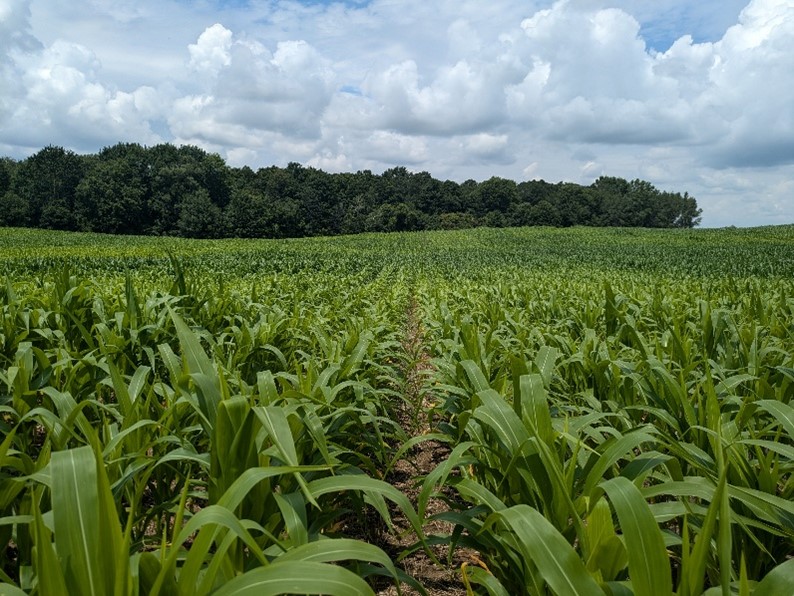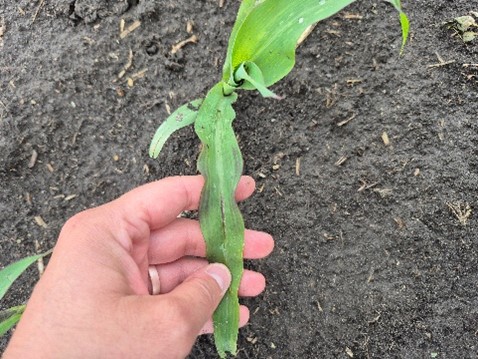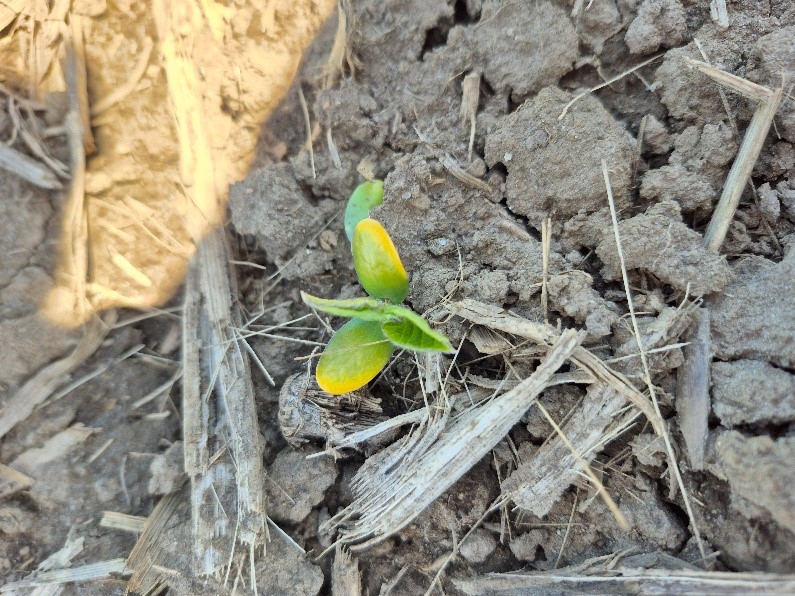
Last year, we talked about listening to your fields—this year, we’re helping you catch what they aren’t saying, before it’s too late.
Crop scouting is a critical part of producing a high-yielding crop. Without it, easily preventable issues can go unchecked—leading to poor yields, weedier fields next season, and ultimately, lost income.
Start with Plant Emergence
Once seed is in the ground, the first thing to monitor is plant emergence. The most effective scouting method—depending on the shape of your field—is usually a “W” or zig-zag walking pattern.
Gone are the days of walking a single row and eyeballing the stand. It’s important to estimate your population accurately—not only in case replanting is needed, but also to inform planter adjustments for next year.
Corn Stand Counts (30″ Rows):
- Measure 17.4 feet (1/1000 of an acre)
- Count all viable plants in that length
- Repeat 8–10 times across the field and average the total
- Multiply the average by 1,000 to estimate plants per acre
Soybean Stand Counts:
Count all plants within one row over the following distances, based on row width.
| Row Width | Distance to Walk | Divide By |
| 7.5″ | 8 ft 10 in | 2,000 |
| 15″ | 17 ft 5 in | 2,000 |
| 22″ | 23 ft 9 in | 1,000 |
| 30″ | 17 ft 5 in | 1,000 |
Take 8–10 samples across the field and average your counts before multiplying. If you find gaps in the row, investigate. Is the seed present? Is it rotten? Was it eaten? This information can guide both fall seed selection and planting decisions for future seasons.
Spotting Deficiencies Before They Hurt Yield
Nutrient deficiencies can be difficult to recognize if you don’t know what to look for. They typically show up in patches, influenced by soil type, elevation, and drainage.
Diagnosing Corn Deficiencies
- Nitrogen: Often a challenge in wet springs. Look for classic yellowing starting on the lower leaves. If untreated, yellowing moves up the stalk as lower leaves die.

- Phosphorus: Easy to spot—purple leaves indicate phosphorus deficiency.

Potassium: Look for yellowing at the leaf edges that eventually turn brown and die. Unlike nitrogen, the yellowing starts at the margins, not the whole leaf.
Soybean Nutrient Clues
- Nitrogen: Pale or yellow lower leaves often point to poor root development.

- Phosphorus: Symptoms include dark green leaves with dead spots or purpling and cupping of older leaves—often due to cool, wet soils slowing uptake.
- Potassium: Yellowing appears on older leaves, especially along the edges and between veins.
It’s important to note: nutrient deficiency symptoms can be a secondary result of another issue—like restricted roots mimicking phosphorus deficiency. While Sylvite bases fertilizer recommendations on soil testing, unpredictable weather can still affect nutrient availability and uptake.
Know When to Spray: Scouting for Weed Timing
Next up: watch for weed emergence to time your post-emergent herbicide application.
Spray when weeds are small—but not too small to ensure good coverage. A general rule: spray at the 4-leaf stage. Always check the product label to ensure compatibility with your crop’s growth stage and the weeds’ development.
Weekly Walks to Stay Ahead of Pests and Pathogens
Insect damage and disease scouting should continue all season. Ideally, each field is walked weekly by you or a Sylvite Agronomist.
- Insects often cause holes, wilting, or rot.
- Diseases tend to show up as spots, lesions, or mottled leaves.
Carry a phone or notebook to record observations. When in doubt, reach out to your Sylvite Agronomist to help identify symptoms and recommend next steps.
Don’t Wait for Disease: The Case for Preventative Fungicides
Some diseases need to be managed before they appear.
- Corn: For tar spot, spray preventatively at green silk stage using a fungicide that includes Groups 3, 7, and 11.
- Soybeans: For white mould, spray before row closure—ideally at early pod formation.
The Bottom Line
Crop scouting is a lot like having a conversation with your fields. Sometimes the message is loud and clear—like stunted plants or yellowing leaves. Other times, it’s more subtle: a faint discoloration, an uneven emergence pattern, or a patchy stand. Just like in any conversation, it’s not only about what’s said, but how it’s said—through tone, timing, and context.
With time and experience, you’ll learn to pick up on both the obvious and the understated signals your crops are sending. You wouldn’t expect a meaningful response by only asking questions once a month—and the same goes for your fields. Consistent scouting gives you the opportunity to listen, interpret, and respond before minor issues become major setbacks. When you treat scouting as an ongoing dialogue rather than a one-time check-in, you gain the insight needed to make timely, informed decisions that drive yield and build resilience for the season ahead.
Need a Hand? Let Sylvite Scout for You
Not every grower has the time to walk every field, every week—and that’s where we can help. Sylvite’s agronomy team offers customizable crop scouting packages designed to fit your acres, crop types, and management goals. Whether you’re looking for full-season support or targeted in-season visits, our certified crop advisors can help you stay ahead of issues before they impact your yield.
From stand counts and weed staging to nutrient observations and disease scouting, our team provides detailed field notes and agronomic recommendations tailored to your operation.
Talk to your local Sylvite location to learn more about our crop scouting services and how we can help keep your fields talking—and your yields on track.